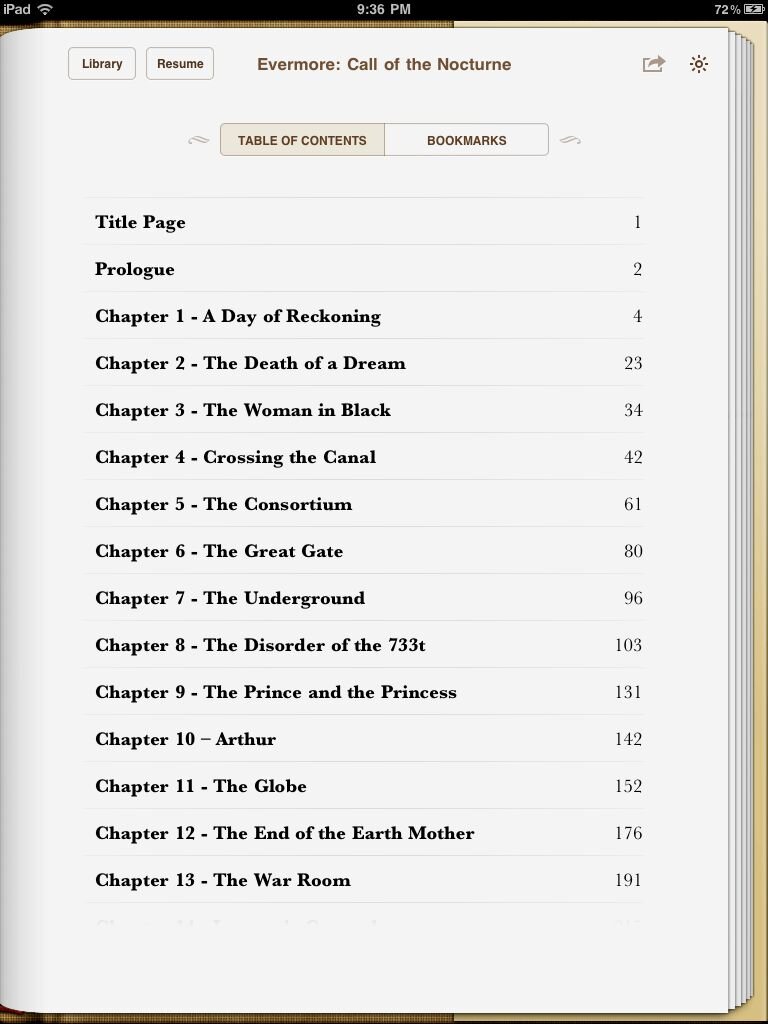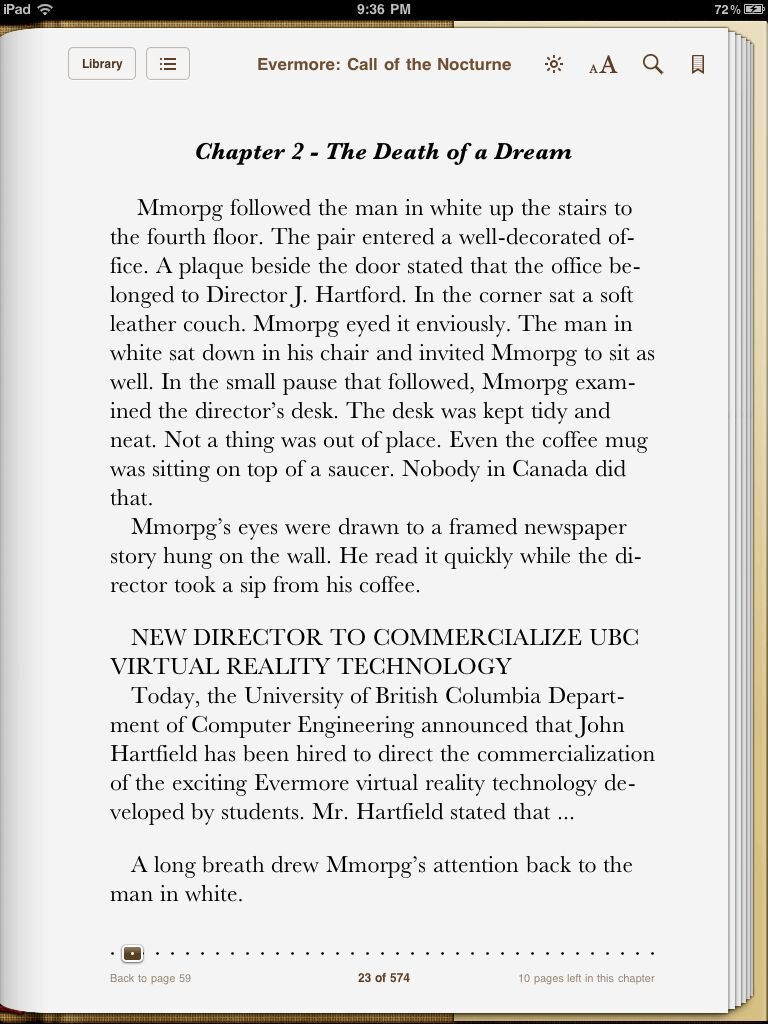Converting Your Manuscript to ePub
This week, I endeavoured to convert my dear-god-i-hope-it's-true-second-to-last-manuscript into ePub format so that I could send it to my brother to read on his iPhone and check out how it looks on my iPad. It wasn't really necessary at this point, but I was too excited to see how it looked on the electronically-printed page.The result? It was a little trickier than I expected.First, I tried copying the manuscript over into Storyist and then converting in ePub. Unfortunately, I ran into a number of problems. First, when I copied the text over to the Storyist program using the Past and Match option, it removed all of the italics in the manuscript and altered some of the formatting. This is a problem because in E:CotN, I used italics to denote when the character Blue, who has survived a bullet wound to her throat, speaks in our hollow, whispery voice. Without the italics, the text just doesn't look right. I could copy and paste without matching the formatting but this resulted in text that was too small and inconsistent to be used. I could highlight all of the text and change the font type and size, but this would also remove the italics.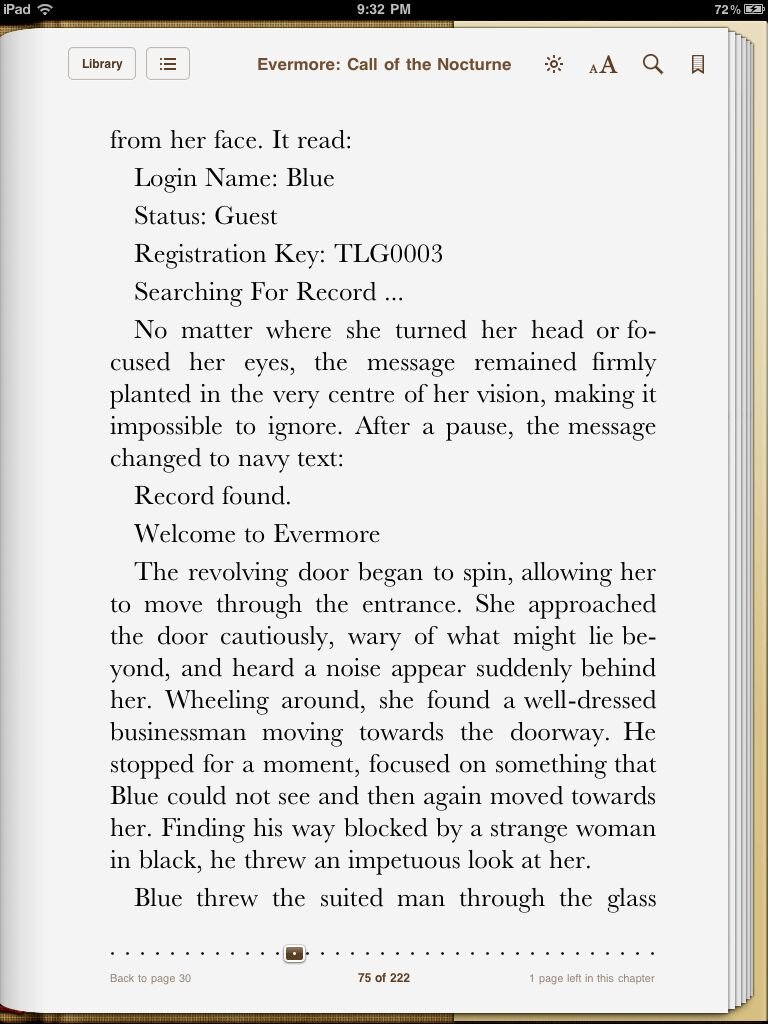 The second problem that I had with Storyist is that when you export a manuscript to .ePub, it adds a little space after each line. Normally, this wouldn't be a problem for me but E:CotN has a lot of very specific formatting for newspaper inserts, song lyrics and computer text. With the extra space added after each line and paragraph, there wasn't enough white space to differentiate between the standard prose and the very specific inserts. There is probably some way to change the settings to remove the extra white space and adjust the formatting, but I was too impatient to attempt it. Instead, I tried converting the manuscript directly from the original .pages file.
The second problem that I had with Storyist is that when you export a manuscript to .ePub, it adds a little space after each line. Normally, this wouldn't be a problem for me but E:CotN has a lot of very specific formatting for newspaper inserts, song lyrics and computer text. With the extra space added after each line and paragraph, there wasn't enough white space to differentiate between the standard prose and the very specific inserts. There is probably some way to change the settings to remove the extra white space and adjust the formatting, but I was too impatient to attempt it. Instead, I tried converting the manuscript directly from the original .pages file.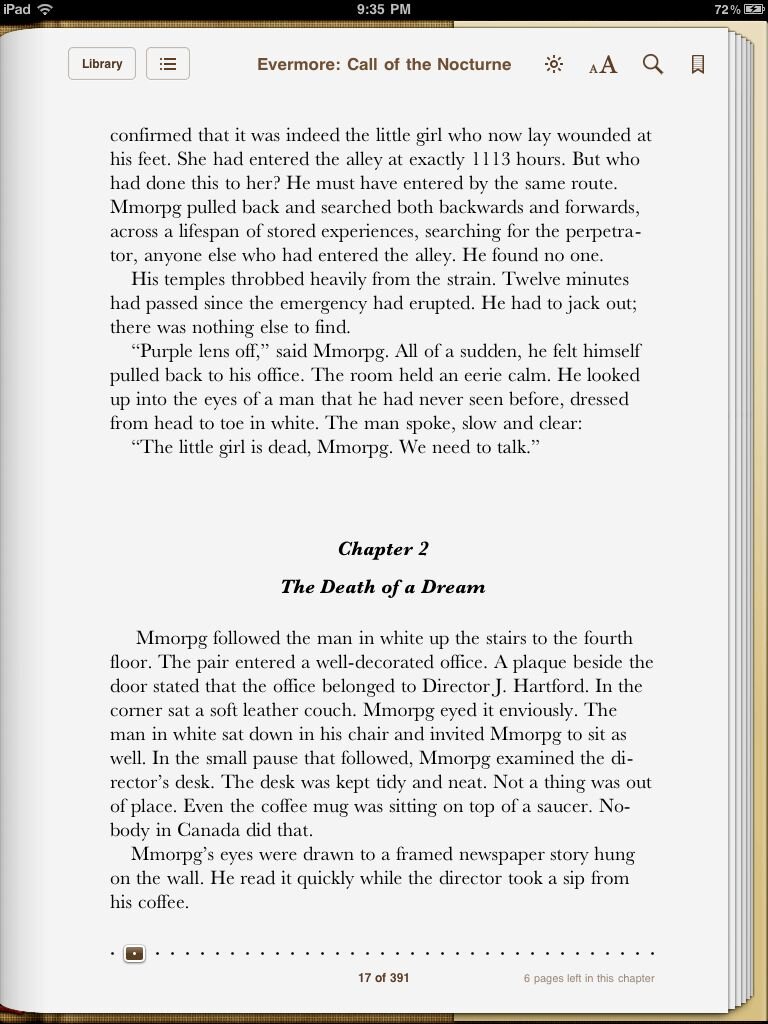 However, Apple Pages had its own challenges that I eventually overcame. First of all, the convertor didn't recognize that I had chapters. The chapter headings that I had created were simply seen as bolded but normal text. So I took the .ePub template file that Apple has provided online, imported the document's styles into my document, and set all of my chapter titles to use the "Chapter Name" style now available in the Inspector.Next I found there was no page breaks between each of the chapters. This was solved by replacing the page break that I had placed in between the chapters with a section break. Finally, I was puzzled by the extra characters that were showing up in the .ePub text. For example, the title of the my first chapter would read: "Chapter 1 - - The Chapter Title". I finally realized that Pages .ePub convertor also converts the markup that has been accumulating since the editing process began. After accepting all of the changes to the document, the problem disappeared.
However, Apple Pages had its own challenges that I eventually overcame. First of all, the convertor didn't recognize that I had chapters. The chapter headings that I had created were simply seen as bolded but normal text. So I took the .ePub template file that Apple has provided online, imported the document's styles into my document, and set all of my chapter titles to use the "Chapter Name" style now available in the Inspector.Next I found there was no page breaks between each of the chapters. This was solved by replacing the page break that I had placed in between the chapters with a section break. Finally, I was puzzled by the extra characters that were showing up in the .ePub text. For example, the title of the my first chapter would read: "Chapter 1 - - The Chapter Title". I finally realized that Pages .ePub convertor also converts the markup that has been accumulating since the editing process began. After accepting all of the changes to the document, the problem disappeared.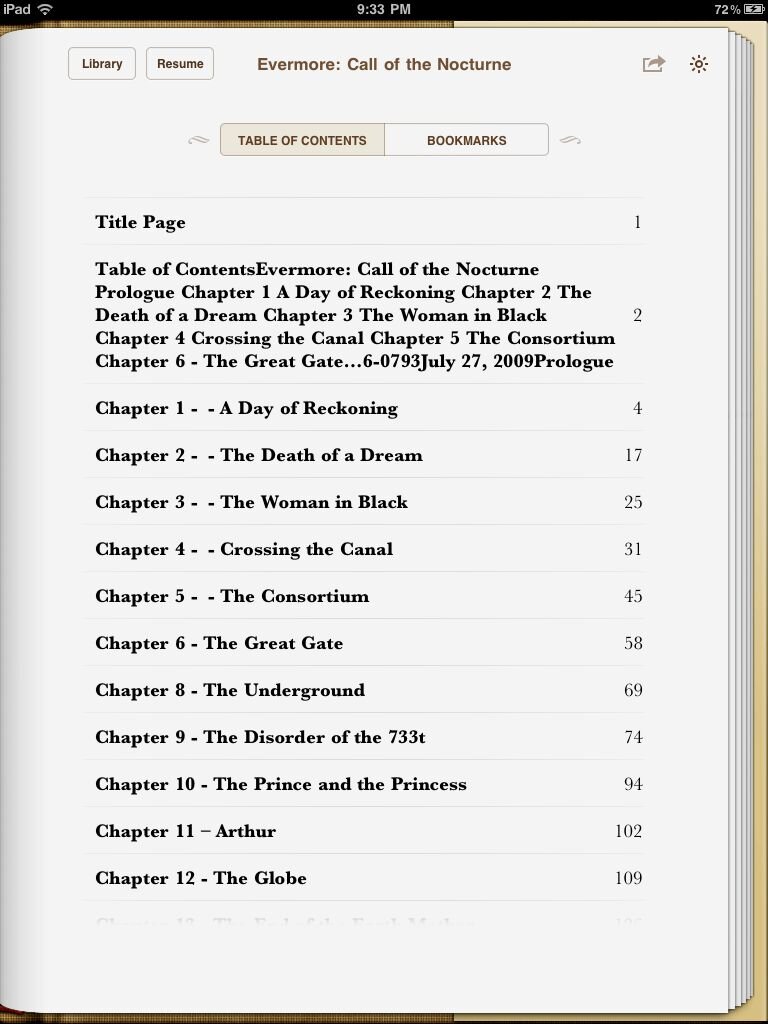 As I grew more confident, I was able to start playing around with the manuscript: setting up the title page to look professional, enlarging the standard text so that it would look just right the first time that it is opened in iBooks, and other experiments with the format. As a result, the text looked exactly how it imagined it on the page. I felt a chill of anticipation run down my spine as I gazed upon my electronic manuscript. It almost looked like a real book, except that it my words.So for the most part, I found Pages easier to use in creating .ePub documents. This is no knock on Storyist, I am certain for my next manuscript that I can produce exactly what I want. But for now, Pages has the edge. It's text simply looks more attractive in .ePub than does Storyist.There are many things that I want to play around with before I publish my novel, including starting each chapter halfway down the page instead of at the top. But for now, this looks good enough.
As I grew more confident, I was able to start playing around with the manuscript: setting up the title page to look professional, enlarging the standard text so that it would look just right the first time that it is opened in iBooks, and other experiments with the format. As a result, the text looked exactly how it imagined it on the page. I felt a chill of anticipation run down my spine as I gazed upon my electronic manuscript. It almost looked like a real book, except that it my words.So for the most part, I found Pages easier to use in creating .ePub documents. This is no knock on Storyist, I am certain for my next manuscript that I can produce exactly what I want. But for now, Pages has the edge. It's text simply looks more attractive in .ePub than does Storyist.There are many things that I want to play around with before I publish my novel, including starting each chapter halfway down the page instead of at the top. But for now, this looks good enough.
